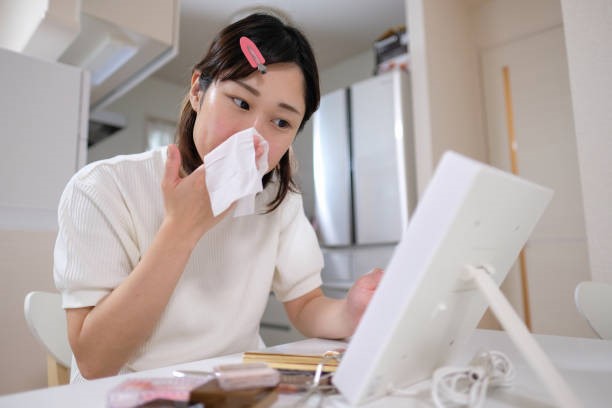
Foraging is one of the oldest methods of sustaining oneself in nature. Today it has gained a new appreciation for its many benefits. From enjoying local, seasonal produce to developing a deeper connection and appreciation for our natural environment, these are just some of the many reasons why more and more people are embracing the rewards of foraging. As a beginner or experienced home cook looking to dip your toe into this ancient practice, here you will find all you need about foraging with confidence: what’s edible, where to look, and how best to prepare wild plants as delicious meals that will nourish both you and your family.
What is Foraging and Why Should You Do It
Foraging is the art of seeking out wild, edible plants and herbs that grow in your local environment. Whether you live in a rural or urban area, there are always forages to discover right outside your doorstep. The benefits of foraging are vast. Not only is it an opportunity to reconnect with nature and learn about your local ecosystem, but it is also a sustainable and cost-effective way to incorporate fresh, nutrient-dense foods into your diet. Forages are often more nutrient-rich than conventionally farmed produce and can be incorporated into a variety of recipes. So why not lace up your hiking boots and see what treasures you can uncover in the wild?
Important Safety Tips to Follow When Foraging
Safety should be of paramount importance when foraging. Here are some key guidelines to ensure a safe foraging experience:
- Never consume something if you are not 100% sure it is safe. Misidentifying plants can lead to consuming poisonous species, which can pose serious health risks. Use a field guide or a reputable mobile app to aid in your identification.
- Observe the “Rule of Three”. Always try to find at least three sources of confirmation that a plant is what you think it is and that it is safe to eat.
- Avoid foraging near busy roads or industrial areas. These places can have high levels of pollution, which the plants absorb.
- Respect the environment. Only take what you need and always ensure there are plenty of plants left for wildlife and other foragers.
- Be considerate of private property rights. Do not forage without permission on private lands, and always follow any local regulations or rules when foraging in public spaces.
Learn About the Wild Edibles in Your Area
Exploring the natural world can be a wonderful way to connect with the environment around you. One of the most exciting and fulfilling ways to do this is through learning about the wild edibles that grow in your local area. From foraging wild berries to collecting sprouting seeds, there are so many tasty and nutritious treats to be found in nature. By learning about the different plants that grow in your area and researching the best ways to prepare them, you can expand your palate and discover a whole new world of culinary delights.
Identify Plants and Fungi with Careful Observations
Proper identification of plants and fungi is crucial to foraging. Misidentification can lead to serious health risks, so it’s important to observe carefully.
- Look for distinctive characteristics. Many edible plants and fungi have specific features that make them recognizable. These may include leaf shape, color, stem structure, and any flowers or fruits.
- Consider the growing conditions. What kind of soil is the plant in? Is it in a shady or sunny area? These factors can help determine what the plant or fungi is.
- Use a field guide. Field guides can be invaluable tools in helping you identify plants and fungi. They often include detailed descriptions and photographs, making it easier to make a positive identification.
- When in doubt, leave it out. If you are unsure whether a plant or fungi is edible, it’s best not to risk it.
Harvest and Store Your Findings Responsibly
Learning to harvest and store your foraged goods responsibly is an essential part of the foraging process. When harvesting, always use clean, sharp utensils to avoid damaging the plants. It is also beneficial to harvest in a way that promotes growth, such as by only taking part of a plant or picking berries without damaging the bushes.
When it comes to storage, most foraged foods are best consumed as fresh as possible. However, if you need to store your finds, there are a few key methods to keep in mind. Some plants, like wild garlic, can be kept in the fridge for a few days, while others, like nuts and seeds, should be stored in a cool, dry place.
If you’ve found a large bounty, consider preserving methods such as drying, canning, or freezing for long-term storage. These methods can help maintain the nutritional value of your finds and allow you to enjoy the fruits of your foraging efforts all year round. You can also put sprouts in a jar and grow them at home.
Creative Ways to Use Your Foraged Goods
Once you have gathered your wild edibles, there are countless creative ways to incorporate them into your meals. Here are a few ideas to get you started:
- Wild Salads: Use a variety of foraged greens, edible flowers, and herbs to make a fresh and vibrant salad. You can even make a dressing with foraged berries for a truly wild experience.
- Foraged Soups: Many wild edibles like nettle, dandelion, and wild garlic make excellent additions to hearty soups. They bring unique flavor profiles and a boost of nutrients.
- Preserves and Jams: Turn foraged fruits and berries into delicious homemade preserves and jams. These can liven up your breakfast toast or serve as a unique gift to family and friends.
- Teas and Infusions: Many wild herbs and flowers can be dried and used to make soothing teas. Try experimenting with different blends for an array of flavors.
- Baking with Foraged Goods: Substitute store-bought fruits with foraged ones in your baking for a wild twist. Foraged nuts and seeds can also be used in breads, cookies, and more.
By foraging, you will not only get a crash course in your local flora and fauna but also enrich the biodiversity of your area. Foragers promote sustainability by removing noxious weeds and helping restore populations of threatened species. Take responsibility when identifying plants and fungi, harvesting responsibly and safely preserving food you harvest for later use. Taking the time to learn all about nature can be quite fun and rewarding, not to mention delicious!






